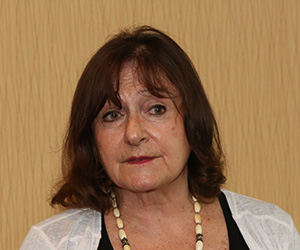Both Ends of the Developmental Continuum

Annette D. Karmiloff-Smith
Most people carry two copies of chromosome 21, but people with Down syndrome carry three copies. This chromosome is the location of the amyloid precursor protein (APP), which produces the beta-amyloid plaques associated with Alzheimer’s disease.
Beta-amyloid plaques accumulate in the brains of all people with Down syndrome, said APS Board Member Annette D. Karmiloff-Smith, Birkbeck, University of London, United Kingdom, in an invited address at the APS Annual Convention. “By about age 30,” she said, the brains of all people with Down syndrome “look like the brains of typically developing adults who have Alzheimer’s disease later [in life].” But incredibly, a percentage of individuals with Down syndrome do not go on to develop dementia.
“What protects someone, despite the brain pathology, from going on to develop dementia? It’s a challenge that we need to understand and could inform Alzheimer’s risk and protective factors in the general population,” Karmiloff-Smith said. To do so, she and her colleagues are closely monitoring the development of a group of infants with Down syndrome between 6 and 60 months of age and comparing them to Down syndrome adults with or without Alzheimer’s.
“The only way to understand a phenotypic endpoint is to study it through developmental time,” Karmiloff-Smith said. She hopes that individual differences in the study cohort will provide clues about the factors that protect some individuals from Alzheimer’s disease and make others vulnerable to it.





APS regularly opens certain online articles for discussion on our website. Effective February 2021, you must be a logged-in APS member to post comments. By posting a comment, you agree to our Community Guidelines and the display of your profile information, including your name and affiliation. Any opinions, findings, conclusions, or recommendations present in article comments are those of the writers and do not necessarily reflect the views of APS or the article’s author. For more information, please see our Community Guidelines.
Please login with your APS account to comment.